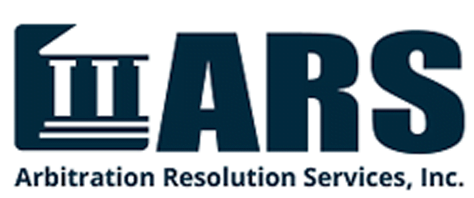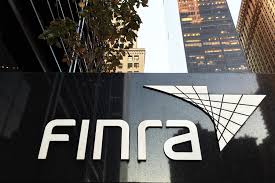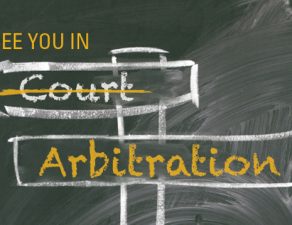By George H. Friedman*
[ARS Chairman of the Board Friedman posted this on his blog at the Securities Arbitration Commentator. Reposted with the permission of and thanks to SAC]
We all know the classic children’s story Goldilocks and the Three Bears, where the last of three approaches turns out to be “just right.” The story line in my view carries over to FINRA’s efforts to address explained arbitration awards. The Authority is contemplating its third attempt at explained awards and in my view like Goldilocks may have hit upon a “just right” approach.[1]
The way we were
For many years, the FINRA arbitration rules or those of its predecessors the NYSE and NASD did not provide for explained awards. The rules neither permitted them nor prohibited them. The result was that on rare occasions arbitrators wrote explained awards, either where the parties jointly requested them or the arbitrators of their own volition wrote one. There was no extra arbitrator compensation for writing explained awards.
Too hard: explained awards where the customer asks for one – in advance
A persistent complaint about securities arbitration is the lack of explained awards. To address the issue, FINRA (then NASD) in 2005 proposed a rule change whereby customers had the right to unilaterally require an explained award. As announced in a Press Release, the proposed rule would have required customers to request the explanation before the arbitration panel held its first hearing. At the conclusion of the process, the panel was to provide a written award describing why each claim was granted or denied. Explained awards would not have needed case or statutes citations, and arbitrators were to receive $200 each for an explained decision, with NASD paying half. Said then-NASD Chairman and Chief Executive Officer Robert R. Glauber, “By giving investors the option of requiring a written explanation of an arbitration panel’s decision, we will increase investor confidence in the fairness of the NASD arbitration process.”
But a funny thing happened on the way to the proposal becoming a rule: it generated very little support as seen by the many comment letters filed with the SEC. The industry by and large panned the proposal as flawed, unnecessary, and unfairly one-sided (see, for example, the comment letter from the Securities Industry Association – now SIFMA). And the customers’ bar wasn’t enthusiastic either, mostly because if counsel guessed wrong on seeking an explained award the prospect of an unhappy client was increased (see, for example, PIABA’s comment letter which in my opinion offered lukewarm support). Some commenters, such as this publication, expressed mixed thoughts. After three years the proposed rule faded away and was quietly withdrawn in 2008.
Too soft: explained awards where all parties agree in advance
In the meantime, FINRA went back to the drawing board and ultimately obtained approval in early 2009 of Rule 12904(g), the explained award rule now in effect. As described in Regulatory Notice 09-16, “FINRA will require arbitrators to provide an explained decision at the parties’ joint request. An explained decision is a fact-based award stating the general reasons for the arbitrators’ decision. Parties will be required to submit any joint request for an explained decision at least 20 days before the first scheduled hearing date. The chairperson of the arbitration panel will write the explained decision and will receive an additional honorarium of $400 for doing so.”
But a funny thing happened on the way to the rule being used: it rarely was. FINRA reported late in 2015 as follows: “Since the rule was adopted, there have been only 37 requests for explained decisions and 27 explained decisions issued out of roughly 5,000 eligible cases, according to FINRA statistics.”[2] Why hasn’t the rule been used very much? It turns out the only parties that consistently want an explained award are losing parties. Winners rarely have an incentive to want an explained award. Why? Because an explained award can form the basis of a legal challenge to it. So, unless one knows in advance that they are going to lose and later seek to vacate the award, taking an affirmative step to request in advance an explained award carries some risk.
Just Right? Defaulting to an explained award, with any party having the right to opt out
FINRA created a 13-member Dispute Resolution Task Force in July 2014 to focus on suggesting “strategies to enhance the transparency, impartiality, and efficiency of FINRA’s securities dispute resolution forum for all participants.” It issued an Interim Report in June 2015, and its Final Report last December. Those recommendations are now under consideration by FINRA’s National Arbitration & Mediation Committee (NAMC) and initial actions have already begun to issue.
One of the proposals would amend the explained award rule to a default system. Specifically, the rule would presume there would be an explained award, with any party having the right to opt out. The new rule would also add a summary explanation of the reasons behind any damage calculation, and would be rolled out with arbitrator training on how to write explained decisions.
I think FINRA has hit on the “just right” approach. The current rule requires an affirmative step to opt in, which the other side may reject. Parties and their counsel have been reluctant to follow this approach. The new approach proposed by the Task Force is less risky: do nothing and you get an explained award, but if you don’t want one you possess the unilateral right to avoid one. Am I right? Time will tell, but a Podcast I moderated recently for the Securities Arbitration Commentator indicates I just might be right. The diverse panel, consisting of industry and customer types and an arbitrator, seemed by and large to like the concept. You can see for yourself starting at 15:50 or read this blog post.
Conclusion
Of course, let’s hope the Goldilocks analogy ends right here. After all, at the end of the story, poor Goldilocks ran away into the forest after finding the last “just right” solution. I’m going with Third Time’s the Charm.
*George H. Friedman, an ADR consultant and Chairman of the Board of Directors of Arbitration Resolution Services, Inc., retired in 2013 as FINRA’s Executive Vice President and Director of Arbitration, a position he held from 1998. In his extensive career, he previously held a variety of positions of responsibility at the American Arbitration Association, most recently as Senior Vice President from 1994 to 1998. He is an Adjunct Professor of Law at Fordham Law School. Mr. Friedman serves on the Board of Editors of the Securities Arbitration Commentator. He is also a member of the AAA’s national roster of arbitrators. He holds a B.A. from Queens College, a J.D. from Rutgers Law School, and is a Certified Regulatory and Compliance Professional.
[1] I have to thank a business reporter, whose questions about explained awards in a recent interview inspired me to author this blog post.
[2] See FINRA Dispute Resolution Task Force Final Report (December 2015) at 21, available at http://www.finra.org/sites/default/files/Final-DR-task-force-report.pdf .




